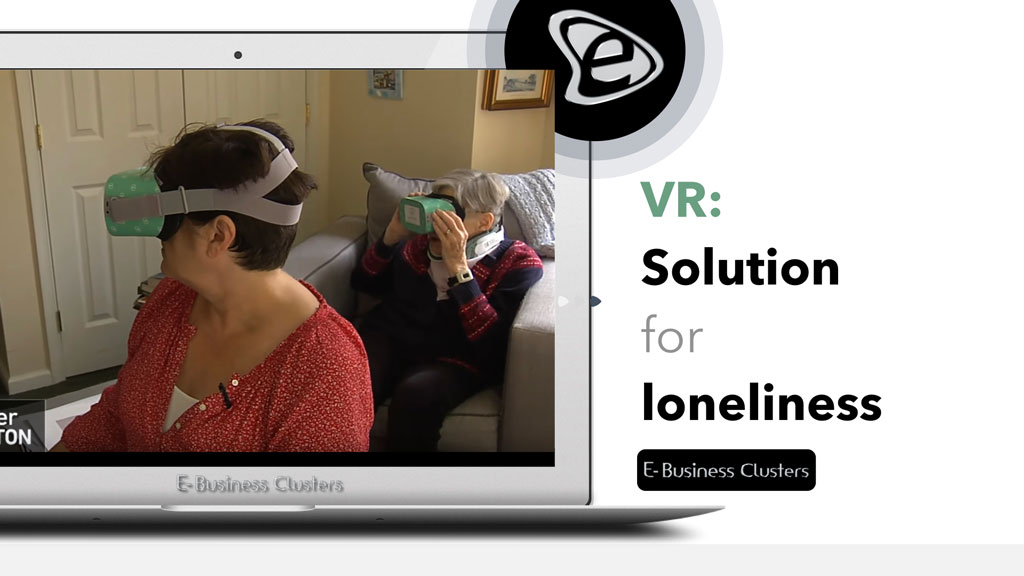VR: Solution for Social Isolation and Loneliness

Phyllis Holmes, a 91 year old former art teacher, recently moved into hospice care in Burlington, but she’s still able to travel.
Her destination one recent day was Harbor Springs, Michigan. There was no bag to pack, no ticket to buy, nothing to plan. Instead, Holmes and her daughter, Rebecca Oteri, returned to their beloved vacation spot with the help of virtual reality headsets.
“This is great,” said Holmes as she looked through her headset and took in the 360-degree view. Virtual Reality is providing comfort to elderly hospice patients and unique experiences.
Once largely the domain of gamers, virtual reality (VR) for seniors is a now a booming field, as an aging population and a shortage of elderly care-givers have added impetus to find new options for senior care. The technology is mostly used in group settings to connect residents in shared social experiences like reminiscing, games and ‘bucket list’ travel.
VR also has applications that address a wide range of health issues, from exercise, to dementia to pain management.
“We have to look at innovation and different tools to come up with new solutions to address issues of social isolation and loneliness and allow people to stay engaged and active,” said University of Pennsylvania Professor George Demiris, an expert in the use of technology for the elderly in care settings.
In hospice settings like Holmes’, VR is a popular way for patients to return to a childhood home and find joy in remembering.
“Our whole goal is to help somebody to have a peaceful passing,” said Casey Cuthbert-Allman, executive director of Continuum Care Hospice, which operates the facility where Holmes is receiving care. “Part of that process is to do a life review. This technology really helps us transport them to accomplish that. This VR project also helps them reconnect with family members.”
“It’s all based on that one little glimmer that comes about when you look at something that you haven’t seen for a long time. When you look at these things, they’re about you or about what you would have liked,” she said. “That to me is a continuation of growing and keeping your mind working as you age.”
Demiris said VR has also shown early promise for dementia patients. While studies so far are small and he says more studies are needed, there is some evidence virtual reality can have a calming effect for older adults who have experienced dementia and show anger or aggressive behavior.
Experts are also looking at other uses for VR in seniors’ lives. Benedictine Health System, which runs a network of Catholic nonprofit senior living centers in five Midwestern states, has partnered with the company MyndVR. Benedictine uses the content for group social activities and to draw out isolated residents, but they’ve recently started using VR for pain reduction during wound dressing. A 2019 review of studies in the Journal of Pain Research concluded that VR is an effective treatment for reducing acute pain.
Headsets are put on patients who can choose from a menu of content to relax just before a dressing is changed.
“The goal is to provide diversity in non-pharmacological interventions, ” said Dr. Neal Buddensick, Benedictine’s chief medical officer, “We’re trying to cut down on the number of pills.”
Still, Demiris and others caution that VR should augment and not substitute for human encounters.
“We would never say that technology could replace the human touch,” Grace Andruszkiewicz, marketing director for Rendever, the Somerville-based company that makes the VR technology Holmes uses. “What we’re trying to do is augment the human touch.”


Leave a Reply